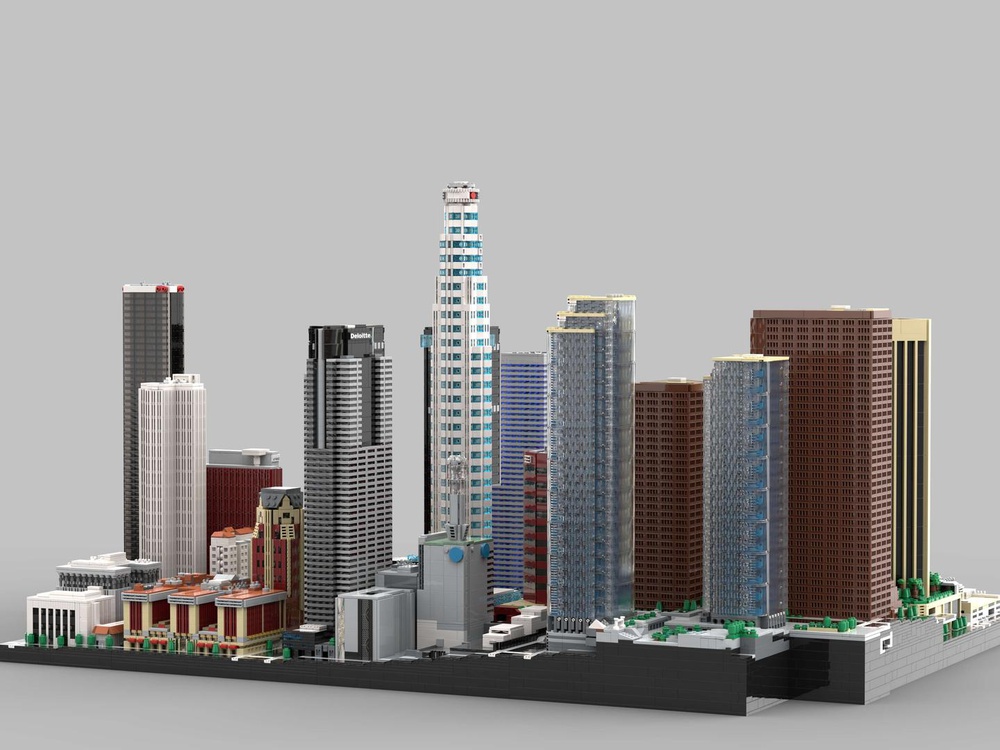
LEGO Stability Tips for Tall Towers
Share
How to build taller, steadier, and sleeker LEGO skyscrapers.
Building a LEGO tall tower is one of the most satisfying creative challenges: it combines aesthetics, structural engineering, and that extra thrill of pushing height just a little further. But as any builder who’s taken on a LEGO tallest tower challenge knows, a few extra bricks up top can turn “majestic” into “wobbly” fast. The key to confident height is planning for stability from the first layer: a wide, well-locked base; a strong core that carries loads; floors that pin the shell to the spine; and simple tricks that fight twist, sway, and sudden knocks from curious hands. In other words—think like a skyscraper engineer, then have fun like a LEGO fan.
Start with your base. A tall model needs a low center of gravity and a broad footprint, so don’t skimp on plates and support under your ground floor. Two 32×32 baseplates (or one 48×48) joined and cross-tied with long plates give you a stiff “raft.” From there, build a core + shell: a compact, ultra-rigid Technic or brick-locked backbone inside, and your detailed façade outside. Tie them together at regular intervals (every 6–10 bricks) so the shell helps the spine resist twist. If you’ve ever felt your tower “corkscrew,” that’s torsion—use triangulation (Technic beams in A-frames), outriggers that connect the core to outer columns, and staggered joints to kill it.
Brick orientation matters. Alternating layers of plates (for shear strength) with bricks (for vertical strength), offsetting seams, and using longer 1×N elements to bridge columns all increase stiffness. Switch to SNOT (studs-not-on-top) columns with headlight/bracket sandwiches to lock layers in multiple directions. For very tall builds, make modular floors (6–10 bricks tall) that pin together with Technic pins/axles; this makes transport easy and the overall structure much stronger.
Weight and wind are enemies. Heavy roof ornaments raise the center of gravity; keep mass low and internal ballast (hidden weights or dense parts) at the bottom if needed. Minimize big, cantilevered balconies; add shear walls (solid internal panels) where your façade is extra open. Finally, think “serviceability”: color-code your core for fast reassembly, pre-plan access hatches, and keep the clutch power of used elements in mind—older, loose clips and joints are best relegated to non-critical details. Whether you’re chasing records, creating a city skyline, or just want your tower to survive play, these LEGO tips & tricks will keep your builds straight, sturdy, and spectacular.
Practical stability tips (MOC-friendly)
-
Base first: At least a 1:3 base-to-height ratio for freestanding towers. Double up plates; criss-cross with long plates to stop flex (lego stability starts at the ground).
-
Core + shell: Build a compact Technic spine (beams, frames) and tie it to outer walls with plates/tiles every 6–10 bricks.
-
Triangulate: A-frames/diagonals inside the core drastically reduce sway. Use 3-5-7 beam combos for clean connections.
-
Lock seams: Stagger vertical seams; bridge corners with long bricks; sprinkle plate layers (2–3 plates ≈ 1 brick) for anti-shear.
-
Outriggers & belts: Every few stories, make a “belt” floor that links all exterior columns to the core—just like real outriggers.
-
SNOT columns: Brackets + headlight bricks create box-section columns that resist bending better than simple studs-up stacks.
-
Light tops, heavy bottoms: Keep the roof light; hide ballast in the base if needed.
-
Modular sections: Build in stackable modules pinned with axles/pins for transport and easy repairs.
-
Footfall & play: If kids will interact, add subtle anti-tip measures: wider plinths, wall-touching buttresses, or a removable rear prop.
-
Challenge mode: For a LEGO tallest tower challenge, restrict parts to plates + 1×N bricks, mandate a 2-plate “belt” every 10 bricks, and time-cap to 20–30 minutes.
Creative ideas for tall tower builds
-
City Icons: Re-create a local landmark, or invent a skyline block where each tower explores a different structural trick.
-
Fantasy & Wizardry: Spiral spires, flying buttresses, floating sky-bridges—perfect for using SNOT columns and outriggers as “story” elements.
-
Superhero HQs: Transparent cores, angled façades, and skybridges are great places to hide structural belts.
-
Broadcast/TV Towers: Tapered shafts with ring platforms (belt floors) make striking shapes while boosting stiffness.
-
Game & Film Towers: Stylized silhouettes (triangular, hex, or offset) challenge your engineering and photography alike.
Hand-picked Tall Tower MOCs
Downtown Los Angeles Phase 1

Designer: FunnyTacoBunny
Get the instructions: Downtown Los Angeles Phase 1 by FunnyTacoBunny.
Hellnahburg

Designer: brickinger_
Get the instructions: Hellnahburg by brickinger_.
St. Mark’s Bell Tower – Venice

Designer: STEBRICK
Get the instructions: St. Mark’s Bell Tower – Venice by STEBRICK.
Dom Tower of Utrecht

Designer: PaulMOCs2023
Get the instructions: Dom Tower of Utrecht by PaulMOCs2023.
Tower Corner

Designer: TanaseNicolae
Get the instructions: Tower Corner by TanaseNicolae.
CN Tower

Designer: The Bobby Brix Channel
Get the instructions: CN Tower by The Bobby Brix Channel.
Modular TV Tower

Designer: Al3xW40
Get the instructions: Modular TV Tower by Al3xW40.
Modular Avengers & Stark Tower (Marvel Avengers)

Designer: Dream Build Bricks
Get the instructions: Modular Avengers & Stark Tower by Dream Build Bricks.
Wizard’s Tower

Designer: bricks_fan_uy
Get the instructions: Wizard’s Tower by bricks_fan_uy.
Amazing Spider-Man Oscorp Tower

Designer: Legofan21
Get the instructions: Amazing Spider-Man Oscorp Tower by Legofan21.
Fantastic 4 Modular Baxter Building – Classic Space Academy

Designer: Dream Build Bricks
Get the instructions: Fantastic 4 Modular Baxter Building – Classic Space Academy by Dream Build Bricks.
Elden Ring – Divine Tower

Designer: Pontus_Gehrmann_MOCS
Get the instructions: Elden Ring – Divine Tower by Pontus_Gehrmann_MOCS.
Bank of America Plaza (Los Angeles)

Designer: Matyo
Get the instructions: Bank of America Plaza (Los Angeles) by Matyo.





